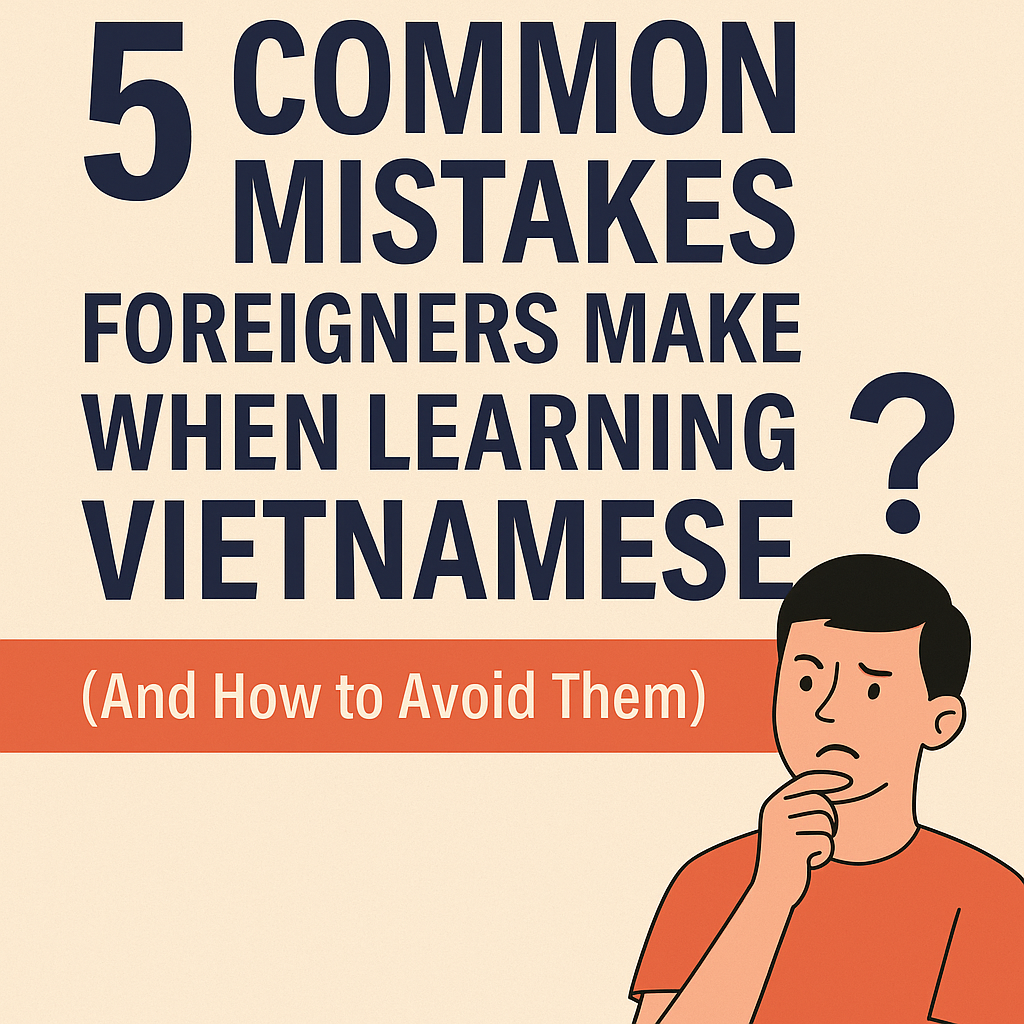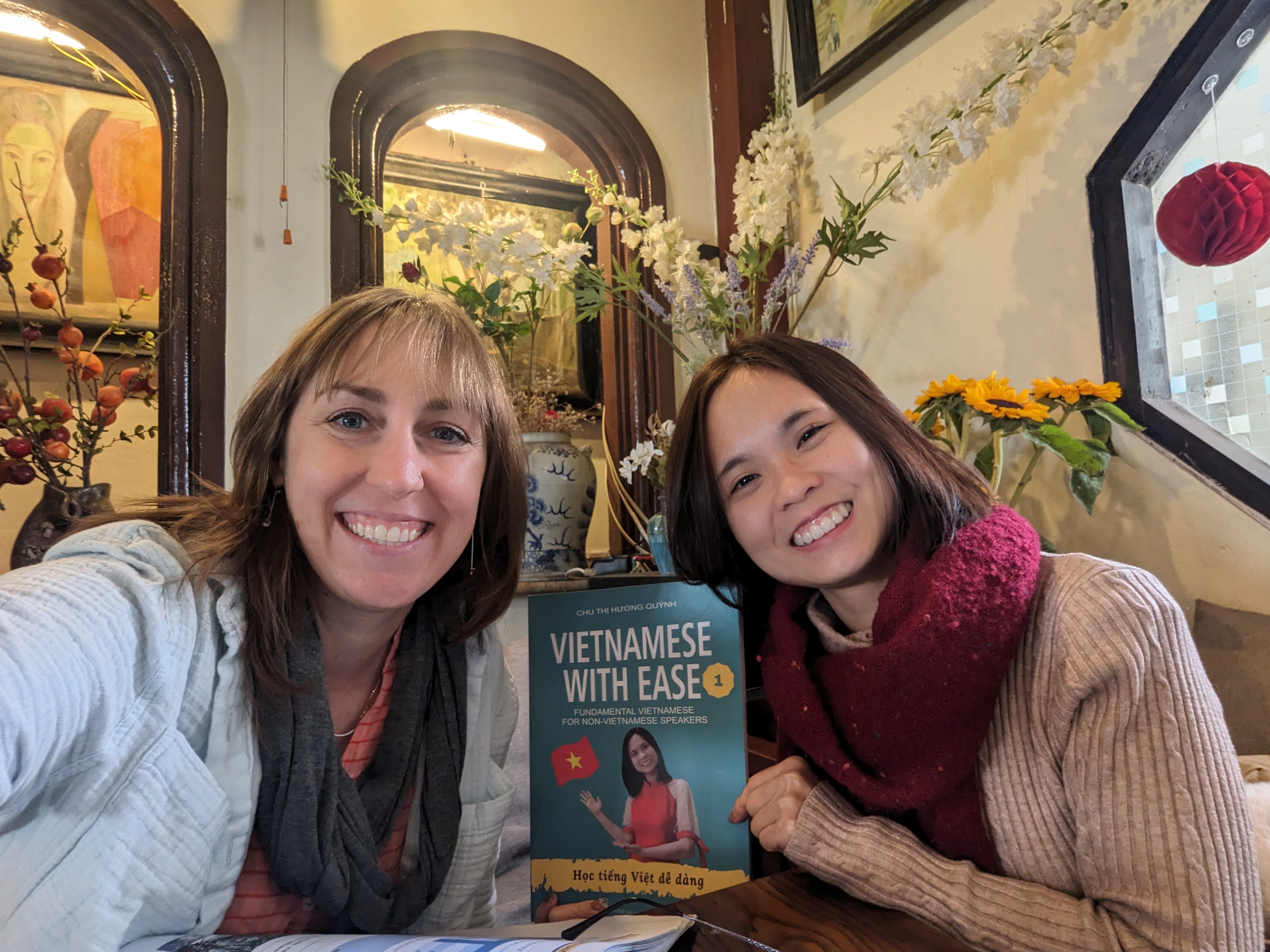5 Common Mistakes Foreigners Make When Learning Vietnamese (And How to Avoid Them)

Learning Vietnamese can be an exciting yet challenging journey, especially for foreigners who are new to tonal languages or Southeast Asian cultures. At iSpeak Vietlingo, we’ve worked with hundreds of learners from around the world and we’ve noticed that many of them make the same mistakes when starting out.
In this article, we’ll explore the 5 most common mistakes foreigners make when learning Vietnamese and more importantly, how you can avoid them for faster progress and better communication.
1. Ignoring Tones (Thanh điệu)
The mistake: Many learners underestimate how important tones are in Vietnamese. Some assume they can “get by” without them or think they’ll figure it out later.
Why it matters: Vietnamese is a tonal language. One word with different tones can have completely different meanings. For example: ma (ghost), má (mother), mã (code), mà (but), mạ (rice seedling), má(cheek)

How to avoid it: Start practicing tones from Day 1. Focus on listening and mimic native pronunciation. Use apps, recordings, or better yet — learn with a Vietnamese teacher who can give you feedback in real time.
2. Translating Directly from English
The mistake:Trying to translate sentences word-for-word from English to Vietnamese.
Why it matters: Vietnamese grammar, word order, and expressions are different. Literal translations often sound unnatural or confusing to native speakers.
How to avoid it: Learn phrases and sentence patterns used by locals. Read dialogues, listen to native conversations, and ask your teacher to correct unnatural expressions.
3. Focusing Too Much on Grammar, Not Enough on Speaking
The mistake: Spending too much time reading grammar rules or doing written exercises — but not practicing speaking.
Why it matters: Vietnamese is a spoken language first. You need to speak it to be able to use it in real life — especially if you're living in Vietnam.
How to avoid it: Practice speaking every day, even if it's just 5 minutes. Repeat after audio lessons, practice with a partner, or join a speaking-focused course like Survival Vietnamese or Vietnamese with Ease.

4. Learning from the Wrong Resources
The mistake: Using outdated materials, learning Southern when living in the North (or vice versa), or watching random YouTube videos without a clear structure.
Why it matters: Vietnamese has regional differences. Also, not all resources are created equal — some may even teach incorrect or overly formal language.
How to avoid it: Use trusted learning materials tailored to your region and your needs. At iSpeak Vietlingo, our textbook series Vietnamese with Ease is designed for real-life use — structured, practical, and up-to-date with cultural insights.
5. Giving Up Too Early
The mistake: Many learners stop after a few weeks because “Vietnamese is too hard” or “I’m not talented at languages.”
Why it matters: Vietnamese is challenging at first, but it gets much easier after the basics. Like any language, consistency and mindset matter more than talent.
How to avoid it: Set realistic goals. Focus on progress, not perfection. Celebrate small wins like ordering food, asking for directions, or understanding a street sign.
Ready to Avoid These Mistakes?
If you're serious about learning Vietnamese, we invite you to join a free trial class at iSpeakVietlingo. Our friendly and experienced teachers will guide you step by step — with the right tones, real-life phrases, and confidence to speak like a local.
Start Your Vietnamese Journey Today
Get your copy of 'Vietnamese with Ease' and begin mastering the Vietnamese language with confidence and cultural insight.
Order Your Copy Now



